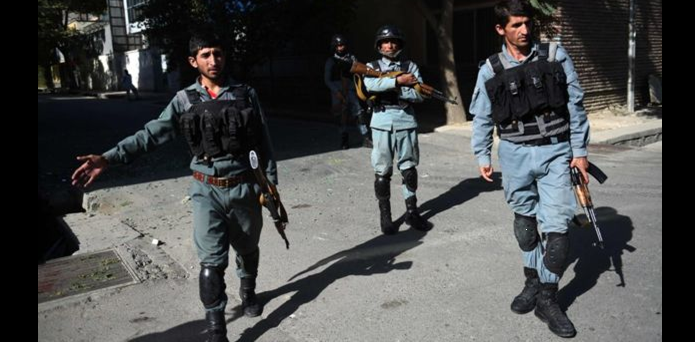Kabul Rocked By Deadly Blasts, Scores Dead

NEW DELHI: Hours after twin explosions in Afghanistan’s capital city killed 24 people, the offices of an international charity in the centre of Kabul have been attacked. At least one civilian is confirmed dead, officials say.
Armed men stormed the offices of organisation Care in the Shar-e-Naw area following a car bomb explosion. Three attackers were killed.
The details of the latest attack are still emerging, as Kabul reels from twin bombings that claimed over 24 lives just hours earlier. At least a 100 people were injured.
Deputy defence ministry spokesperson Mohammad Radmanesh told the Associated Press that the suicide attacker struck as security forces gathered near the ministry to deal with the first blast. The blast targeted ministry employees as they were leaving work during rush hour, and an army general and two senior police officers are among the dead.
Afghan President Ashraf Ghani condemned the attack saying it had been carried out by "the enemies of Afghanistan who have lost their ability to fight the security and defence forces".
The Taliban claimed responsibility for the twin attacks on Monday.
The attacks come 11 days after at least 13 people, including seven students, were killed as gunmen stormed the American University in Kabul. It also follows the most deadly attack in Kabul in years, as in July 80 people were killed in an attack targeting a protest march being carried out by the Shia Hazara minority group in Kabul.
The upswing in violence comes as the militant group makes gains across Afghanistan, with its forces closing in on Lashkar Gah -- the capital of Helmand province, and Kunduz -- the eastern city that had fallen to the group last year in what was their biggest victory since the US invasion in 2001. Although NATO and Afghan forces deny that either Lashkar Gah or Kunduz are in danger of falling to the Taliban, the reality is that the group controls large swathes of surrounding territory and is dangerously close to both cities.
Further, the increasing attacks in Kabul represent a deteriorating security situation and will go a long way in undermining the ability of the Afghan government to guarantee safety in the eyes of the Afghan people.
Additionally, the violence brings with it a rise in civilian casualties, and the latest UN Assistance Mission in Afghanistan (UNAMA) figures corroborate this with 1,601 civilian deaths and 3,565 injured civilians recorded in the first six months of 2016 -- an increase of four per cent in the total number of casualties compared to the first six months of 2015. The total civilian casualty figure recorded by the UN since 1 January 2009 through 30 June 2016 has risen to 63,934, including 22,941 deaths and 40,993 injured.
This year's casualties include 1,509 children, 388 dead and 1,121 injured, a figure the UN described as “alarming and shameful,” particularly as it represents the highest numbers of children killed or wounded in a six-month period since counting began in 2009. There were also 507 women casualties, 130 killed and 377 injured. The figures are conservative – almost certainly underestimated – given the strict methodology employed in their documentation and in determining the civilian status of those affected.
It is worth reiterating that civilian casualty figures have risen to record levels every year since the UN began documenting it in 2009.



